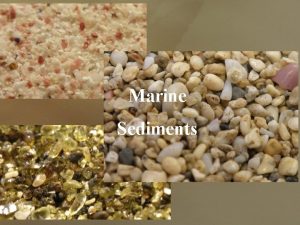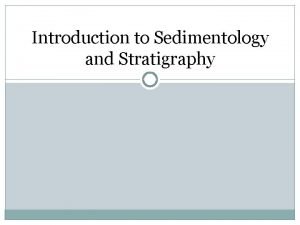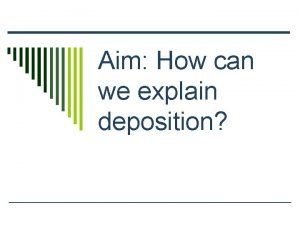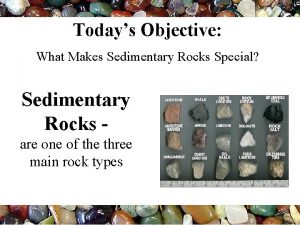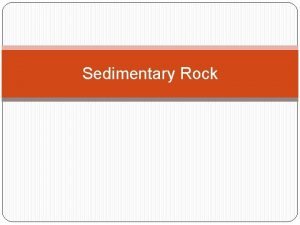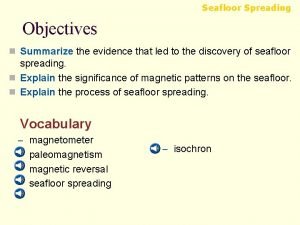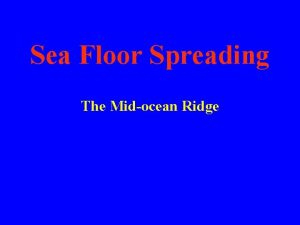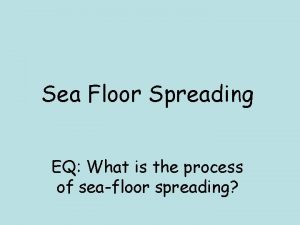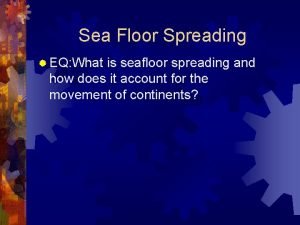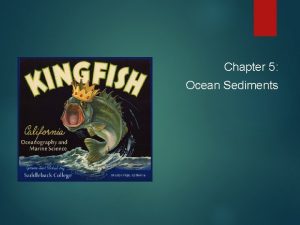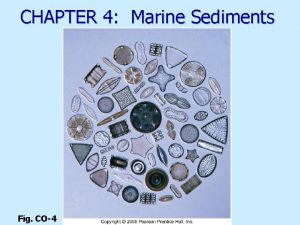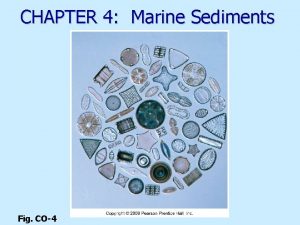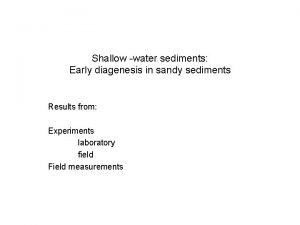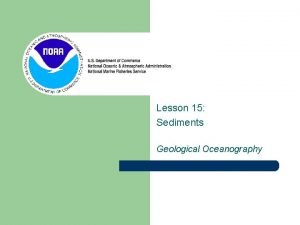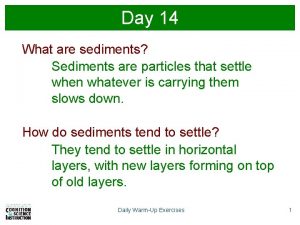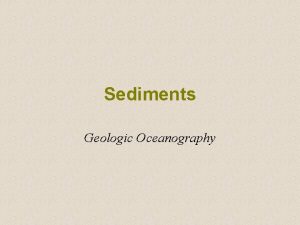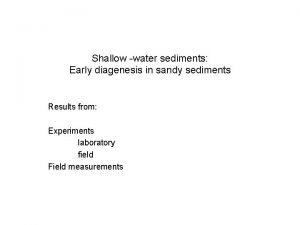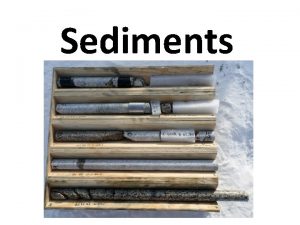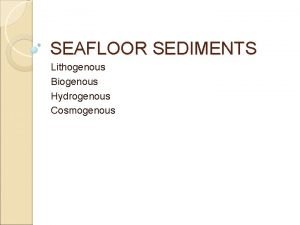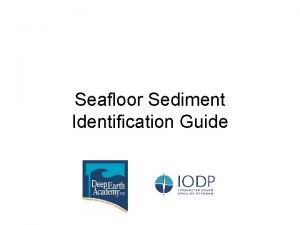Seafloor Sediments Resources from the Seafloor Chapter 14














- Slides: 14

Seafloor Sediments & Resources from the Seafloor Chapter 14, Sections 3 & 4

Seafloor Sediments l l l Most of the ocean floor is covered with sediment Some sediment is deposited by turbidity currents The rest of the sediment has slowly settled onto the seafloor from above The sediment varies in thickness over the ocean floor Ocean-floor sediments can be classified according to their origin into three broad categories: terrigenous sediments, biogenous sediments, and hydrogenous sediments

Terrigenous Sediment l l l Terrigenous Sediment – sediment that originates on land Terrigenous sediments consist primarily of mineral grains that were eroded from continental shelf and continental rocks and transported to the ocean Larger particles (gravel and sand) settle rapidly near shore Finer particles (clay) may take years to settle on the ocean floor and may be carried thousands of kilometers by the ocean’s currents On continental shelves, the terrigenous sediment is the thickest

Terrigenous Sediment

Biogenous Sediment l l l Biogenous Sediment – sediment that is biological in origin Biogenous sediments consist of shells and skeletons of marine animals and algae Calcareous Ooze – produced from the calcium carbonate shells of organisms Calcareous ooze has the consistency of thick mud Siliceous Ooze – composed primarily of diatoms—single-celled algae—and radiolarians —single-celled animals that have shells made out of silica

Biogenous Sediment

Hydrogenous Sediment l l l Hydrogenous sediment consists of minerals that crystallize directly from ocean water through various chemical reactions These make up only a small portion of the ocean’s sediments Manganese nodules are hard lumps of metals which precipitate around grains of sand Calcium carbonates form by precipitation directly from ocean water in warm climates Evaporites (salts) form where evaporation rates are high and there is restricted open-ocean circulation

Manganese Nodules

Distribution of Seafloor Sediments

Energy Resources l l l l Oil and natural gas are the main energy products currently being obtained from the ocean floor The ancient remains of microscopic organisms are the source of today’s deposits of oil and natural gas The remains were buried and heated for millions of years to be transformed into oil and gas Gas Hydrates – compact chemical structures of water and natural gas Most oceanic gas hydrates are created when bacteria break down organic matter trapped in ocean-floor sediment These bacteria produce methane gas along with small amounts of ethane and propane Gas hydrates resemble chunks of ice, but will ignite when lit by a flame

Gas Hydrates

Other Resources l l l Other major resources from the ocean floor include sand gravel, evaporative salts, and manganese nodules Sand gravel from offshore are used for landfill, to fill in recreational beaches, and to make concrete; many high economic value minerals can also be found in these deposits (diamonds, gold, platinum, etc. ) Manganese Nodules – hard lumps of manganese and other metals that precipitate around a smaller object The manganese nodules also contain many minerals which have high economic value (iron, copper, nickel, cobalt, etc. ) When seawater evaporates, the salts increase in concentration until they no longer remain dissolved and precipitate out to form salt deposits

Salt Deposits

Assignment l Read Chapter 14, Section 3 (pg. 407 -409) l Do Section 14. 3 Assessment #1 -6 (pg. 409) l Read Chapter 14, Section 4 (pg. 410 -413) l Do Section 14. 4 Assessment #1 -8 (pg. 413)
 Classification of marine sediments
Classification of marine sediments What are sedimenta
What are sedimenta A low hill is composed of unsorted sediments
A low hill is composed of unsorted sediments How rocks form
How rocks form A process that squeezes, or compacts, sediments
A process that squeezes, or compacts, sediments Features of sedimentary rocks
Features of sedimentary rocks The process that presses sediments together
The process that presses sediments together Biogenous sediments definition
Biogenous sediments definition What is the transformative process of operations management
What is the transformative process of operations management Fixed resources
Fixed resources Renewable resources vs nonrenewable resources
Renewable resources vs nonrenewable resources Isochron map of ocean-floor crust worksheet answers
Isochron map of ocean-floor crust worksheet answers Seafloor spreading vocabulary
Seafloor spreading vocabulary Harry hess and seafloor spreading
Harry hess and seafloor spreading Seafloor spreading theory
Seafloor spreading theory
